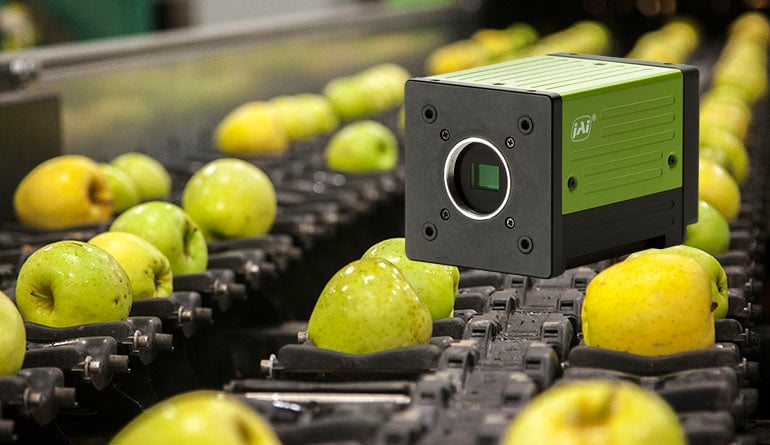
Over the past few decades, consumer expectations regarding food quality and freshness have risen steadily. In order to achieve quality levels that are acceptable to typical buyers, fresh fruits and vegetables sold at supermarkets and other commercial outlets must go through stringent sorting procedures.
Post-harvest quality assessments of fruits and vegetables use color and other visible characteristics to determine factors such as ripeness, uniformity of shape and size, and absence of defects on skin and flesh, while additional assessments look at texture-related features such as firmness, toughness and tenderness. Quality assessments help to decide the appropriate kind of processing and application for each fruit or vegetable, such as peeling, slicing, canning, syrup preparation or raw fruit consumption.
Up until a few years ago, these quality parameters were mostly assessed manually. In several countries, manual labor still plays a large role in quality assessment of raw food items. But as the demand for food items in both domestic and export markets has grown, automation in the sorting process has become a key requirement to help food producers achieve high productivity and consistent quality during both short and long consumption periods; reduce predictive and preventive costs; and achieve higher overall supply chain efficiencies.
Standard color machine vision cameras have been used to identify surface defects, shape, size and geometry, as well as check color consistency and surface texture. Inspection of tenderness, ripeness and firmness can be done by inspecting the intrinsic/internal properties of the fruit or vegetable.
Most of the visible wavelengths, (typically from 400 nm to 700 nm) are unable to penetrate through the surface of fruits and vegetables. Often additional cameras that are sensitive to NIR wavelengths (700 nm to 1000 nm) are needed. In this way, a combination of visible and NIR wavelengths can be utilized to assess the extrinsic and intrinsic properties of fruits and vegetables.
The challenge however is to achieve very good optical alignment of sub-pixel accuracy between visible and NIR inspections – a challenge that is particularly problematic if separate cameras are used for color and NIR inspection. This is because in order to achieve perfect optical sorting, the spatial accuracy between the individual cameras is essential.
For example, if a potential defect spot is 8 pixels in size and the permissible defect spot is 6 pixels, the alignment between the various cameras would play a critical role. If the optical misalignment is more than 2 pixels, then the object could be judged to “pass” the quality criteria even though the physical defect size is much larger.
In addition to problems with defect assessment, a multi-camera arrangement can also create problems related to the size of the system itself. A robust, multi-camera, external opto-mechanical assembly can be too large to fit inside smaller OEM systems. Furthermore, its impact on the complexity and stability of the system on both the camera and PC side must not be underestimated.
A more efficient approach which has been favored by many developers of food inspection systems is to use prism-based multispectral cameras. In the prism-based cameras, the light from the lens is split by a prism-block and directed towards multiple sensors including visible sensor(s) and NIR sensor(s). This means the optical view of the fruit is the same for all of the image channels. There is no need to have an additional opto-mechanical assembly for precise alignment of the view.
This approach also drastically reduces the physical space requirement, especially for smaller sorting machines. The prism-based approach makes it easy to trigger all the video streaming channels precisely at the same time. In addition, different channels can be video streamed without “fusing” the image in the camera head. This means that the raw or debayered RGB video stream can be made separately available from the one or two individual NIR streams captured. This allows the individual video streams to be processed or analyzed for targeted defects separately when that is required.
In addition, if the inspection task requires the RGB video stream settings to be completely different than the NIR channels, this can work efficiently using the same multi-streaming technique. And if the spectral response of the RGB and NIR channels need tweaking, the prism technology is also well suited to achieve that.
Download datasheet on JAI´s 3-CMOS multispectral area scan cameras.
For more information, on JAI´s prism-based, multispectral cameras for optical fruit sorting, please contact JAI.
